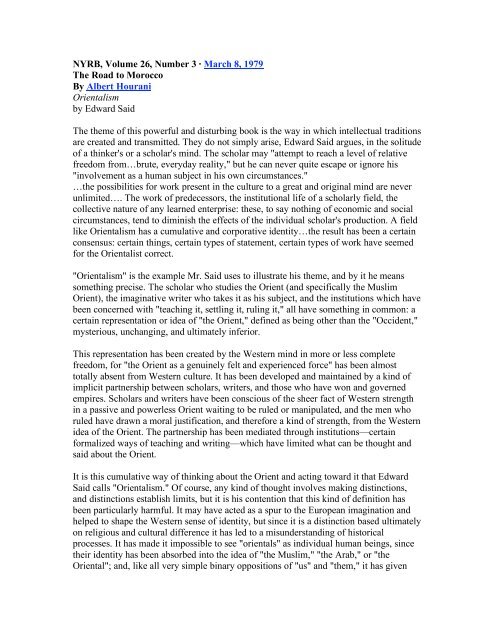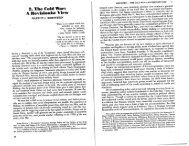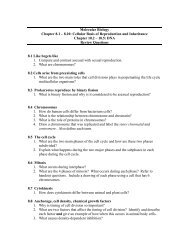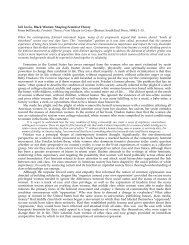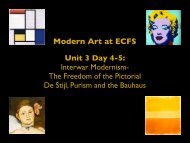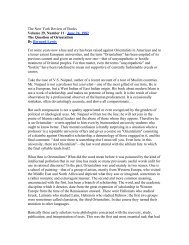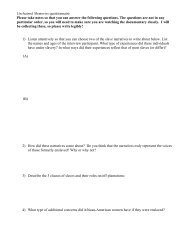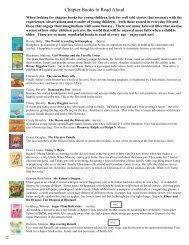Albert Hourani,"The Road to Morocco,"
Albert Hourani,"The Road to Morocco,"
Albert Hourani,"The Road to Morocco,"
- No tags were found...
You also want an ePaper? Increase the reach of your titles
YUMPU automatically turns print PDFs into web optimized ePapers that Google loves.
NYRB, Volume 26, Number 3 · March 8, 1979<strong>The</strong> <strong>Road</strong> <strong>to</strong> <strong>Morocco</strong>By <strong>Albert</strong> <strong>Hourani</strong>Orientalismby Edward Said<strong>The</strong> theme of this powerful and disturbing book is the way in which intellectual traditionsare created and transmitted. <strong>The</strong>y do not simply arise, Edward Said argues, in the solitudeof a thinker's or a scholar's mind. <strong>The</strong> scholar may "attempt <strong>to</strong> reach a level of relativefreedom from…brute, everyday reality," but he can never quite escape or ignore his"involvement as a human subject in his own circumstances."…the possibilities for work present in the culture <strong>to</strong> a great and original mind are neverunlimited…. <strong>The</strong> work of predecessors, the institutional life of a scholarly field, thecollective nature of any learned enterprise: these, <strong>to</strong> say nothing of economic and socialcircumstances, tend <strong>to</strong> diminish the effects of the individual scholar's production. A fieldlike Orientalism has a cumulative and corporative identity…the result has been a certainconsensus: certain things, certain types of statement, certain types of work have seemedfor the Orientalist correct."Orientalism" is the example Mr. Said uses <strong>to</strong> illustrate his theme, and by it he meanssomething precise. <strong>The</strong> scholar who studies the Orient (and specifically the MuslimOrient), the imaginative writer who takes it as his subject, and the institutions which havebeen concerned with "teaching it, settling it, ruling it," all have something in common: acertain representation or idea of "the Orient," defined as being other than the "Occident,"mysterious, unchanging, and ultimately inferior.This representation has been created by the Western mind in more or less completefreedom, for "the Orient as a genuinely felt and experienced force" has been almost<strong>to</strong>tally absent from Western culture. It has been developed and maintained by a kind ofimplicit partnership between scholars, writers, and those who have won and governedempires. Scholars and writers have been conscious of the sheer fact of Western strengthin a passive and powerless Orient waiting <strong>to</strong> be ruled or manipulated, and the men whoruled have drawn a moral justification, and therefore a kind of strength, from the Westernidea of the Orient. <strong>The</strong> partnership has been mediated through institutions—certainformalized ways of teaching and writing—which have limited what can be thought andsaid about the Orient.It is this cumulative way of thinking about the Orient and acting <strong>to</strong>ward it that EdwardSaid calls "Orientalism." Of course, any kind of thought involves making distinctions,and distinctions establish limits, but it is his contention that this kind of definition hasbeen particularly harmful. It may have acted as a spur <strong>to</strong> the European imagination andhelped <strong>to</strong> shape the Western sense of identity, but since it is a distinction based ultimatelyon religious and cultural difference it has led <strong>to</strong> a misunderstanding of his<strong>to</strong>ricalprocesses. It has made it impossible <strong>to</strong> see "orientals" as individual human beings, sincetheir identity has been absorbed in<strong>to</strong> the idea of "the Muslim," "the Arab," or "theOriental"; and, like all very simple binary oppositions of "us" and "them," it has given
ise <strong>to</strong> judgments of moral worth. <strong>The</strong> Orient is seen as strange and distant, malignant anddead unless we bring it <strong>to</strong> life, the haunt of "monsters, evils, heroes; terrors, pleasures,desires."<strong>The</strong> germ of this vision of the Orient Mr. Said finds in the first encounters of WesternEurope with the world of Islam: the struggle for control of the Mediterranean basincaused a recurrent trauma in the Western mind, and it could only be controlled by trying<strong>to</strong> explain Islam in familiar terms, as a false revelation or a Christian heresy. <strong>The</strong>n, in thesecond half of the eighteenth century, structures of thought inherited from the past were"secularized, redisposed and reformed": under the influence of a new kind of intellectualcuriosity and the expansion of European power, the image of the Muslim enemy turnedin<strong>to</strong> the modern image of the "Oriental." <strong>The</strong>re appeared the first modern "Orientalists,"the Frenchman Anquetil-Duperron, who discovered and translated Avestan texts, and theEnglishman Sir William Jones, who translated Sanskrit poetry and studied Hindu laws,and who "before he left England for India in 1783…was already a master of Arabic,Hebrew, and Persian." Jones was particularly important because his career was bound upwith the first effective and permanent rule of Europeans over an Oriental society, that ofthe East India Company in Bengal; in his life and work, the link between politicaldomination and the urge <strong>to</strong> understand becomes explicit.A generation later there came a European incursion in<strong>to</strong> the heart of the Muslim Orient.<strong>The</strong> French occupation of Egypt in 1798 was not only an incident in the revolutionarywars, it was a movement of the imagination. Bonaparte had read the Comte de Volney'sVoyage en Egypte et en Syrie and other writings about Egypt, and they helped <strong>to</strong> shapehis actions there: he was conscious of forty centuries looking down on him and hissoldiers: he thought of himself as coming <strong>to</strong> bring back life <strong>to</strong> a lifeless world, and thescholars and scientists who went with him carried out the first systematic appropriation ofan Oriental society and culture.<strong>The</strong> French expedition perhaps did more for the "imaginative geography" of the Orientthan for the real Egypt. To represent the Orient intellectually and imaginatively, <strong>to</strong>dominate it and bring it back <strong>to</strong> life: these endeavors were <strong>to</strong> create the Orientalist "field"during the next seventy years or so. Scholars discovered, edited, extracted, translated, andinterpreted texts: at first an individual effort, their work was later codified and embodiedin institutions and traditions…Parallel <strong>to</strong> the process of scholarly investigation went that of exploration. Some travelers<strong>to</strong> the Orient, like Lane, went as scholars <strong>to</strong> gather materials; some, like Chateaubriand,<strong>to</strong> discover or assert their identities; others, like Bur<strong>to</strong>n, from a mixture of motives. In asubtle analysis not only of what they said but of the ways in which they said it—arrangement, style, and "<strong>to</strong>ne"—Mr. Said uncovers the "latent Orientalism" beneath theirdifferences of approach. For all of them, the fact of empire, the assertion and dominationof Europe, was a present reality; the Orient appeared as a fallen being, attractive but fullof danger, in particular sexual danger.
<strong>The</strong> modern Orient that they found was not the real Orient but a dead shell in<strong>to</strong> whichonly Europe could breathe life again; travel in the Orient was a kind of pilgrimage, whichbore fruit only when the traveler had encountered dangers and overcome them, seenstrange places and turned his back on them, and returned <strong>to</strong> his own self enriched. In spiteof the similarities, Mr. Said is aware of differences between British and French attitudes,and perhaps he overstates them. For the British, securely established in India, he says, theMuslim Orient is a region of potential domination; for the French it is haunted by a"sense of acute loss." But in this period the French had not irretrievably lost the MiddleEast, and they had won for themselves a new province of the imagination in Algeria.In the last quarter of the nineteenth century a new phase begins. <strong>The</strong> imperialgovernments take on new responsibilities, the British in Egypt and the French in Tunisia;then the division of the Ot<strong>to</strong>man Empire, foreshadowed before the First World War, isaccomplished at its end, and the Arabic-speaking provinces fall under British and Frenchcontrol. <strong>The</strong> relationship between scholarly work and political action becomes closer andmore complex. <strong>The</strong> institutions through which the Orientalist tradition is transmitted arelarger, more formally organized, and more closely linked with governments. Within thistradition, new human types of the "Orientalist" emerge. In the generation before 1914, theage of light-hearted, combative, and self-assured expansion, there appears the "imperialagent," the man who puts his knowledge and ideas, his feelings and impulses, at theservice of empire.In the years after 1918 the Orientalist vision changes. Europe is in control of the Orient;its ultimate power cannot be shaken, its right <strong>to</strong> rule is scarcely questioned, but theresurgence of the peoples of Asia is now seen as a challenge, and the typical Orientalis<strong>to</strong>f the age is the adviser who, while accepting the ultimate reality of Western domination,tries <strong>to</strong> show the way <strong>to</strong> a peaceful resolution of differences, a kind of mutual acceptance.<strong>The</strong> English and French traditions culminate in two figures who seem <strong>to</strong> sum them up:the first is the Frenchman Louis Massignon, whose evocation of the mystical writer andmartyr Mansur al-Hallaj has been formed not only by the European tradition of Islamicstudies but by an aesthetic sensibility and a Catholic consciousness typically French andof that time; the second is the Scotsman Hamil<strong>to</strong>n Gibb, whose lineage goes back throughThomas Arnold and Robertson Smith <strong>to</strong> the same origins, and whose vision of thecontinuity and development of the Muslim community through his<strong>to</strong>ry would come mosteasily <strong>to</strong> a mind conscious of imperial responsibilities and holding a certain Protestantview of the Church.Mr. Said writes of both of them with respect for their culture, the quality of their thought,and their courage, but regards them both as being caught within the "Orientalist" cast ofmind: "Oriental studies" had not turned critically upon their own tradition, as otherhuman sciences were doing at the time, and for both Massignon and Gibb the ultimatereality was something called "Islam," eternally present, always different from the West,in which the individuality of human beings, the differences of times and places, weredissolved.Massignon died in 1962, and Gibb in 1971; for those of us who knew them and cancompare our memories with what Mr. Said writes of them, doubts and questions may
arise. His writing is forceful and brilliant (sometimes <strong>to</strong>o forceful for comfort, sometimes<strong>to</strong>o brilliant <strong>to</strong> be clear); and he has the skill <strong>to</strong> penetrate human wills and <strong>to</strong> delineate thestructure of human visions. But can it be that he himself has fallen in<strong>to</strong> the trap which hehas exposed, and has sunk human differences in an abstract concept called "Orientalism"?What is the status of this concept? What kind of validity can he claim for the generalstatements he makes—such statements as these: "Orientalists are neither interested in norcapable of discussing individuals"; the Orientalist is marked by "absence of sympathycovered by professional knowledge"?In a sense, the answer is simple. What Mr. Said has done is <strong>to</strong> construct an ideal type of"the Orientalist," made up of a number of elements logically connected with each other,and free from extraneous and accidental elements. But as every social scientist knows,such ideal types must be used with care and caution in order <strong>to</strong> explain particular eventsor human beings. No person fully exemplifies one type: each must be seen in the light ofseveral types. One of them may explain him more than others, but in the end someirreducible individual flavor will remain. Having admired the elegance of Mr. Said'sconstruction, we must still ask how far it will serve as a principle of explanation of thehuman beings about whom he writes. <strong>The</strong> politicians and colonial servants? On thewhole, yes… It may be, however, that he is not treading on such sure ground when hewrites about scholars. Here <strong>to</strong>o he has found some telling quotations: <strong>The</strong>odor Noldekesaying that his life's work had only confirmed his "low opinion" of the Eastern peoples,or Gibb claiming that "the Arab mind" is incapable of rational thought. Some element of"latent Orientalism" was indeed present in the minds of most of the Oriental scholars ofthe period he deals with; if it was not a certain contempt for those about whom theywrote, it was at least a conviction that they unders<strong>to</strong>od these people, knew their languagesand beliefs, better than they did themselves. We must still ask, however, <strong>to</strong> what extentthis conviction entered in<strong>to</strong> their work and determined its direction and limits.Said's thesis is that the tradition of European "Orientalism" has now been transplanted <strong>to</strong>the United States, expressed in the language of the social sciences, embodied ininstitutions closely linked with American interests and policies in the Middle East, andused as a weapon in the conflict of Israel and the Palestinians. Once more, he is probablyright in so far as he is dealing with popular images: for the movies, the politicians, andmuch of the press, the Arab is the creeping, mysterious, fearsome Oriental shadow. Bu<strong>to</strong>nce more doubts arise when he writes about scholars…Today's work still expresses, <strong>to</strong> a great extent, a European and American conception ofthe Muslim East: "the Arab and Islamic world remains a second-order power in terms ofthe production of culture, knowledge and scholarship." <strong>The</strong>re are some exceptions: noOt<strong>to</strong>man his<strong>to</strong>rian would neglect the work of Halil Inalcik and other great Turkishhis<strong>to</strong>rians, and no student of North Africa in future will be able <strong>to</strong> ignore the profoundand original ideas of Abdullah Laroui. But in general it is true that the Western student ofthe Arabs and Persians still works within a structure of ideas created by other Westernstudents. Arabs and Persians, "as a genuinely felt and experienced force," are still notpresent in Western culture; but it would need another book <strong>to</strong> explain why this is so.


